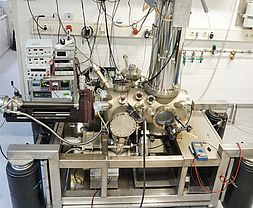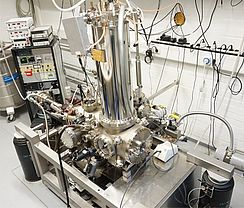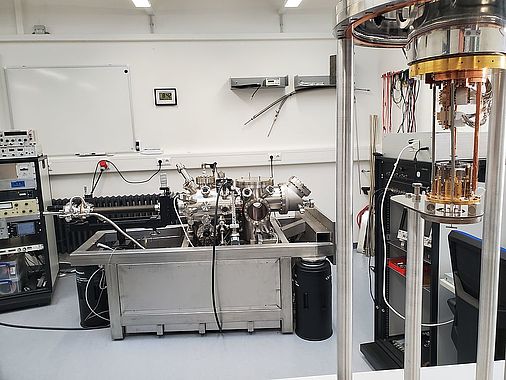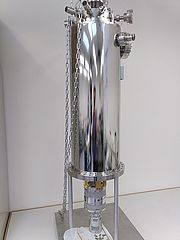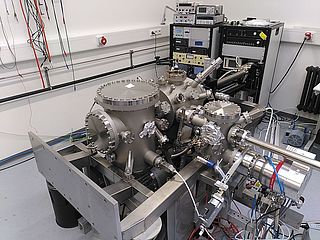
Labs
Our studies primarily focus on the investigation of atoms and molecules at their intrinsic length scales. To this end, most of our microscopes are operated under ultrahigh-vacuum (UHV) and cryogenic temperature (10K and below) conditions. This allows examining single molecules under clean and stable conditions.
Furthermore, all of our microscopes are equipped with the required toolset for in-situ preparation of atomically flat and clean samples.
Combined Scanning Tunneling/Atomic Force Microscopes
These two equivalent setups are based on a qPlus sensor design, which allows us to perform scanning tunneling microscopy (STM) and atomic force microscopy (AFM) measurements simultaneously. Functionalizing the tip with additional atoms or molecules enables the AFM study of intramolecular phenomena with sub-ångstrom precision. These microscopes are also capable of employing the newly developed AC-STM technique, which allows the investigation of molecular orbitals on insulating surfaces.
Lightwave Scanning Tunneling Microscope
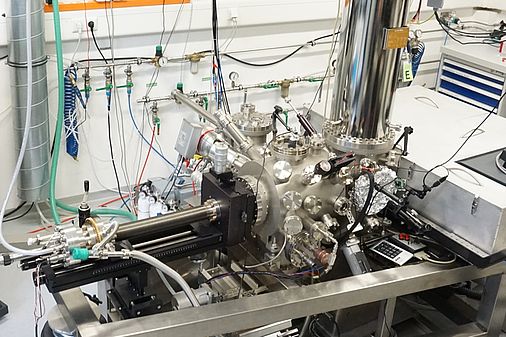
One of the most recent developments in a collaboration with the group of Prof. Rupert Huber at the University of Regensburg culminated in the establishment of lightwave scanning tunneling microscopy (LW-STM). Here, phase-stable laser pulses in the terahertz regime are coupled into the tunneling junction, which act as a transient bias voltage. This permits the manipulation of single electrons on a femtosecond time scale and can be used to track the motion of individual molecules with sub-molecular precision.
2K/9T Scanning Tunneling Microscope

The cryostat of this microscope is equipped with a so-called 1K-pot allowing for a sample temperature of slightly below 2 K, while a solenoid magnet can provide magnetic fields of up to 9 T. This combination of temperature and field allows for inelastic spin-flip excitations to be detected in scanning tunneling spectroscopy, such that this microscope is dedicated to spin-related studies.
mK/10T Scanning Tunneling Microscope
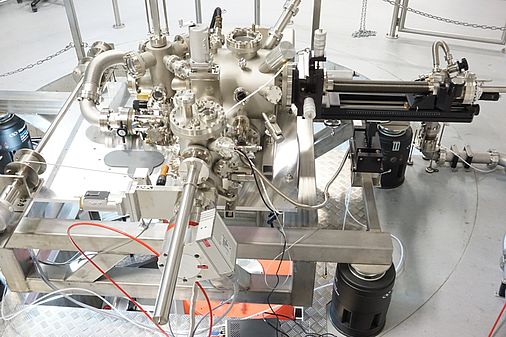
Mid Infrared Lightwave Scanning Tunneling Microscope
With this next-generation lightwave-driven scanning tunneling microscope we envision to reach low-fs time scales by driving the tunneling process with sub-cycle mid-infrared laser pulses. The novel microscope head facilitates an integrated optical mirror and a dedicated optical pathway to couple the laser into the cryostat. This development is pursued in a collaboration with the group of Prof. Rupert Huber.
Towards lightwave-driven scanning tunneling microscopy in a magnetic field
Repp Group
Latest News
In a recent publication in Nature Nanotechnology, we report on the development of a single-molecule time-resolved tunneling spectroscopy detected via atomic force microscopy.
